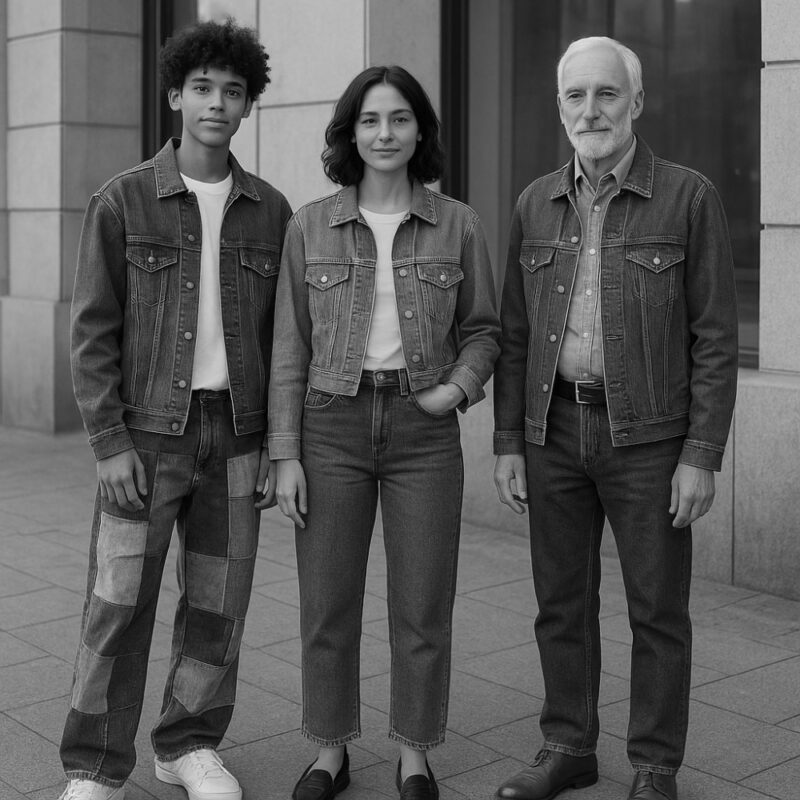Why denim continues to evolve across time
Denim reinventing has become one of the most fascinating shifts in modern fashion. Once a symbol of workwear and rebellion, denim now transcends age groups, lifestyles, and cultural boundaries. Its constant evolution shows how a single fabric can remain relevant while adapting to each generation’s voice and values.
Denim’s evolution from workwear to high fashion
Denim’s story has always been one of reinvention. In the mid-20th century, jeans symbolized youthful defiance. By the 1980s, designers began sending denim down the runway, blending luxury with everyday wear. Today, the lines blur even further as high fashion houses reinterpret denim with sculptural silhouettes, washed finishes, and tailored cuts that appeal to both younger crowds and seasoned style enthusiasts.
Denim reinventing through culture
Across different cultures, denim has taken on unique meanings. In some regions, it reflects Western influence; in others, it serves as a canvas for traditional craftsmanship and embroidery. This cultural layering keeps denim alive, ensuring it is never bound to a single identity. The global exchange of ideas has made denim one of the few garments that can unify generations while allowing endless personal interpretation.
Generational style shifts
Every age group has its own relationship with denim. Younger audiences experiment with oversized fits, patchwork, and distressed details that speak to creativity and freedom. Millennials often favor versatile cuts like straight-leg or cropped designs, pairing them effortlessly with office or weekend looks. Older generations lean toward timeless silhouettes, valuing durability and refined washes. This spectrum proves that denim reinventing is not about one style replacing another, but about coexistence across ages.
Sustainability guiding the future
As fashion leans toward sustainability, denim faces its most important reinvention yet. Eco-friendly washes, organic cotton, and recycled fibers are changing the way jeans are produced. Vintage and secondhand denim have surged in popularity, reflecting a generational desire to shop with intention. By blending heritage techniques with innovation, brands are giving denim new life while addressing environmental concerns.
A fabric that never stands still
Denim’s ability to remain relevant comes from its fluid identity. It belongs to everyone, whether styled casually with sneakers or elevated with tailored jackets. As each generation adds its mark, denim continues to move forward without losing its core appeal. Its reinvention is less about trend cycles and more about the timeless ability to adapt and inspire.






